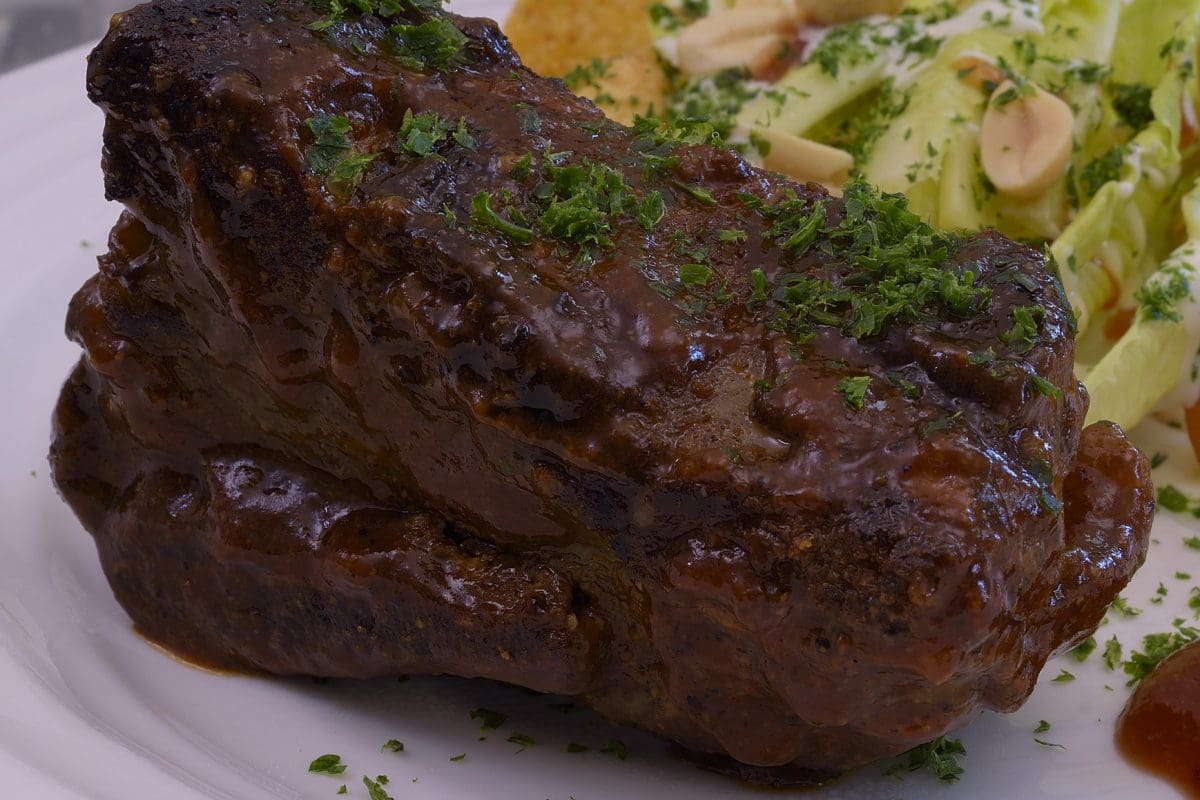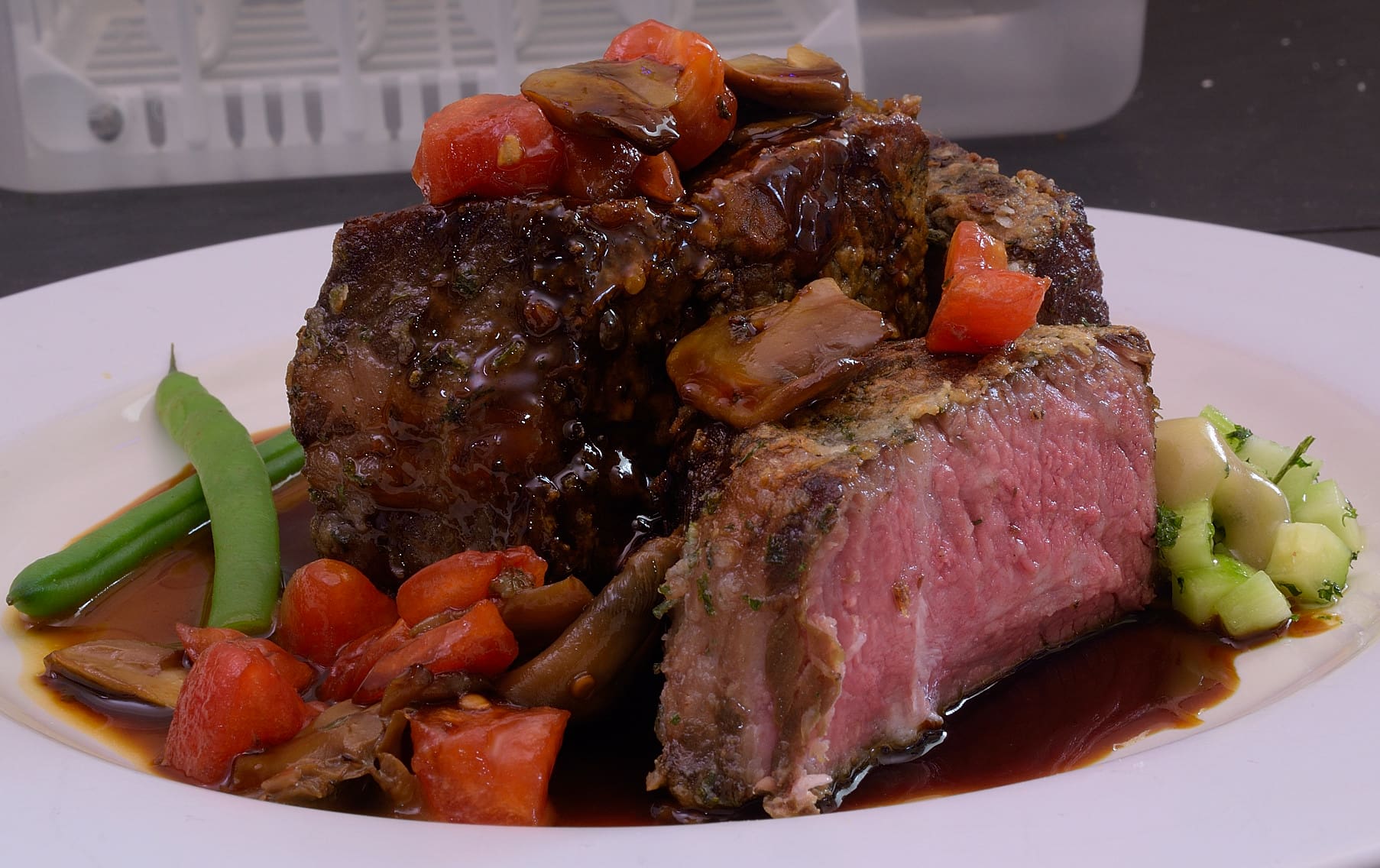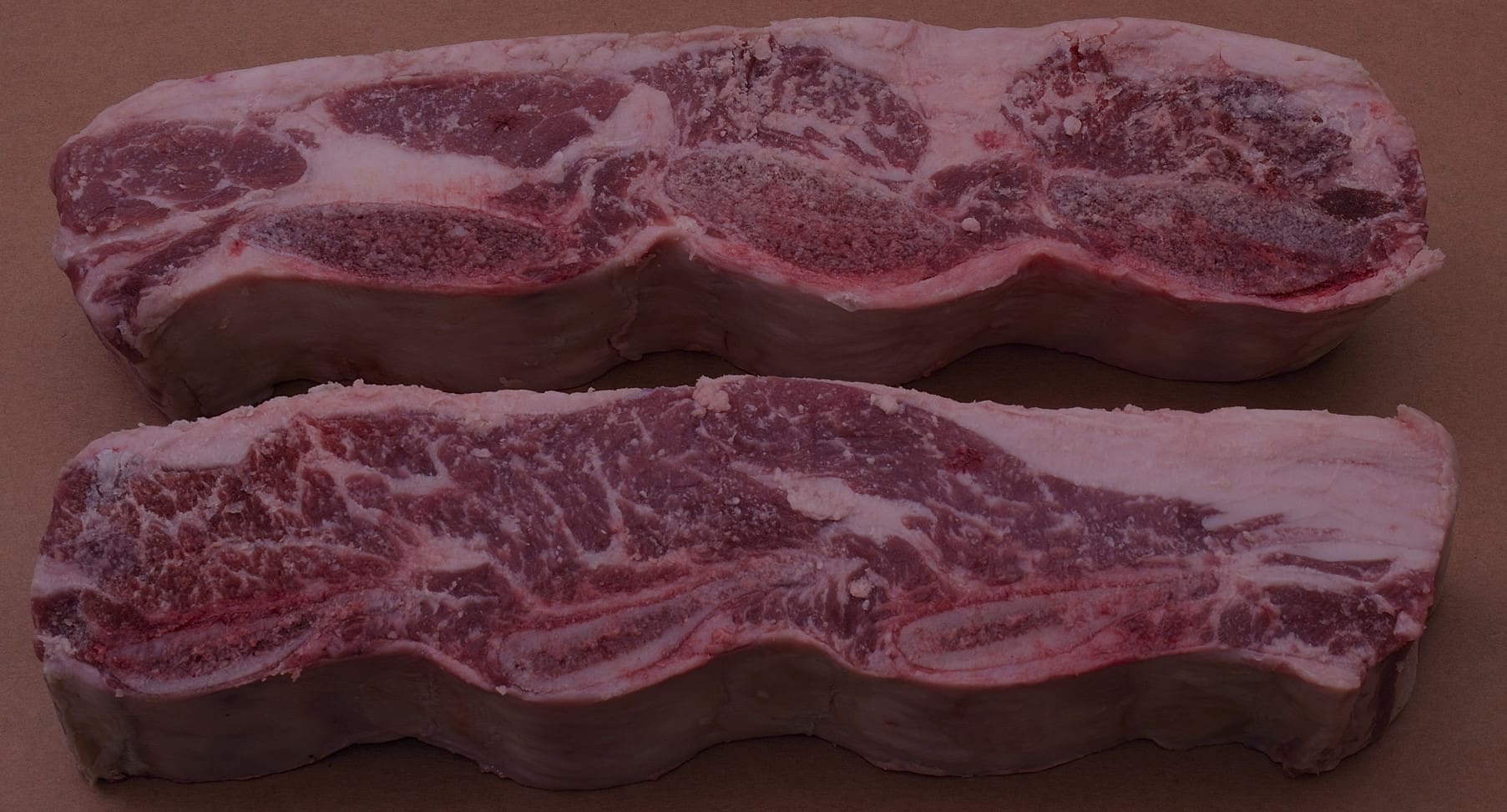Above: Lipavi C10 container, N10 polycarbonate rack. Lipavi C10L lid.
Serves 2-4
Level of difficulty 2.75
You can do this! Read on!
There is no such thing as a “short rib.” The term is used to refer to normal sized ribs that have been “cut short.” At the end of the rib bones that most of us have seen attached to prime rib, slices are taken from the rib cage as it approaches the sternum/belly.
There are usually 3-4 rib bones visible. “English cut” short ribs are thicker (2″-3″) like these, whereas the “Flanken cut“ are somewhat thinner.
The skin side will have a layer of fat in varying thickness. Some chefs are insistent to remove this, where others prefer to remove it after cooking. Some of us just leave it on there!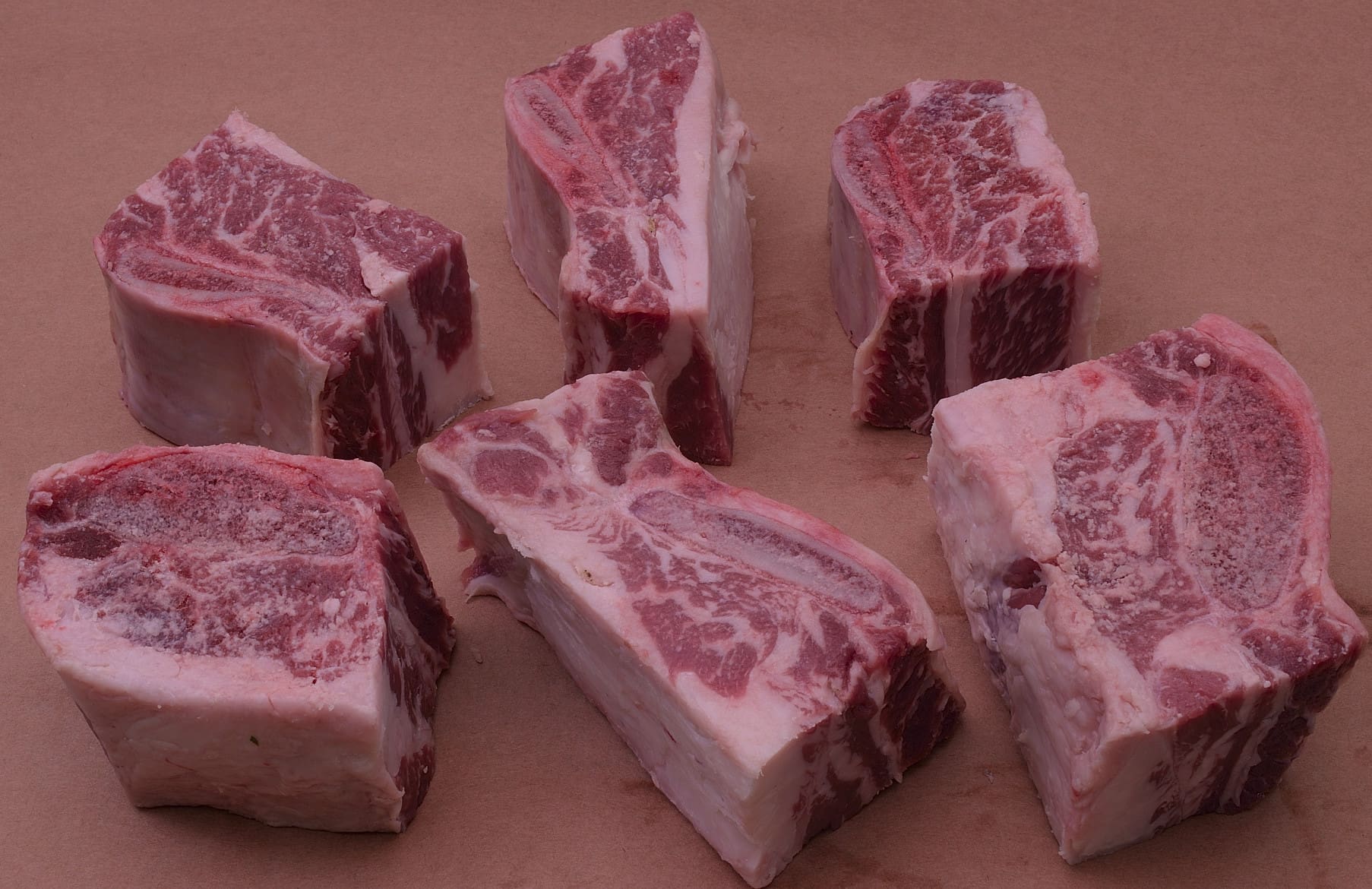
For this recipe, we cut the sections down to one rib each. Because of the unique characteristics of sous vide, this will not affect cooking time.
Procedure:
After vacuum sealing in heat rated plastic bags, the boneless short ribs are processed at 140 F/60 C for a minimum of 48 hours. Click the link HERE to learn how to measure tenderness in real time. This creates a fully tenderized, pasteurized and preserved product. Cold shock the sealed packages in iced water until they achieve 70 F/21 C and refrigerate at 40 F/4 C. The sealed packages can remain safely refrigerated in this state for at least two weeks.
Day of service
Preheat an oven to 170 F/77 C.

Remove the package(s) from the refrigerator. Submerge in hot tap water 110 F+/43 C+ (or a heated sous vide bath) until the gel/juices melt. Remove the short ribs from the bags and harvest the juices into a microwaveable container (or small sauce pan). Set the juices aside.
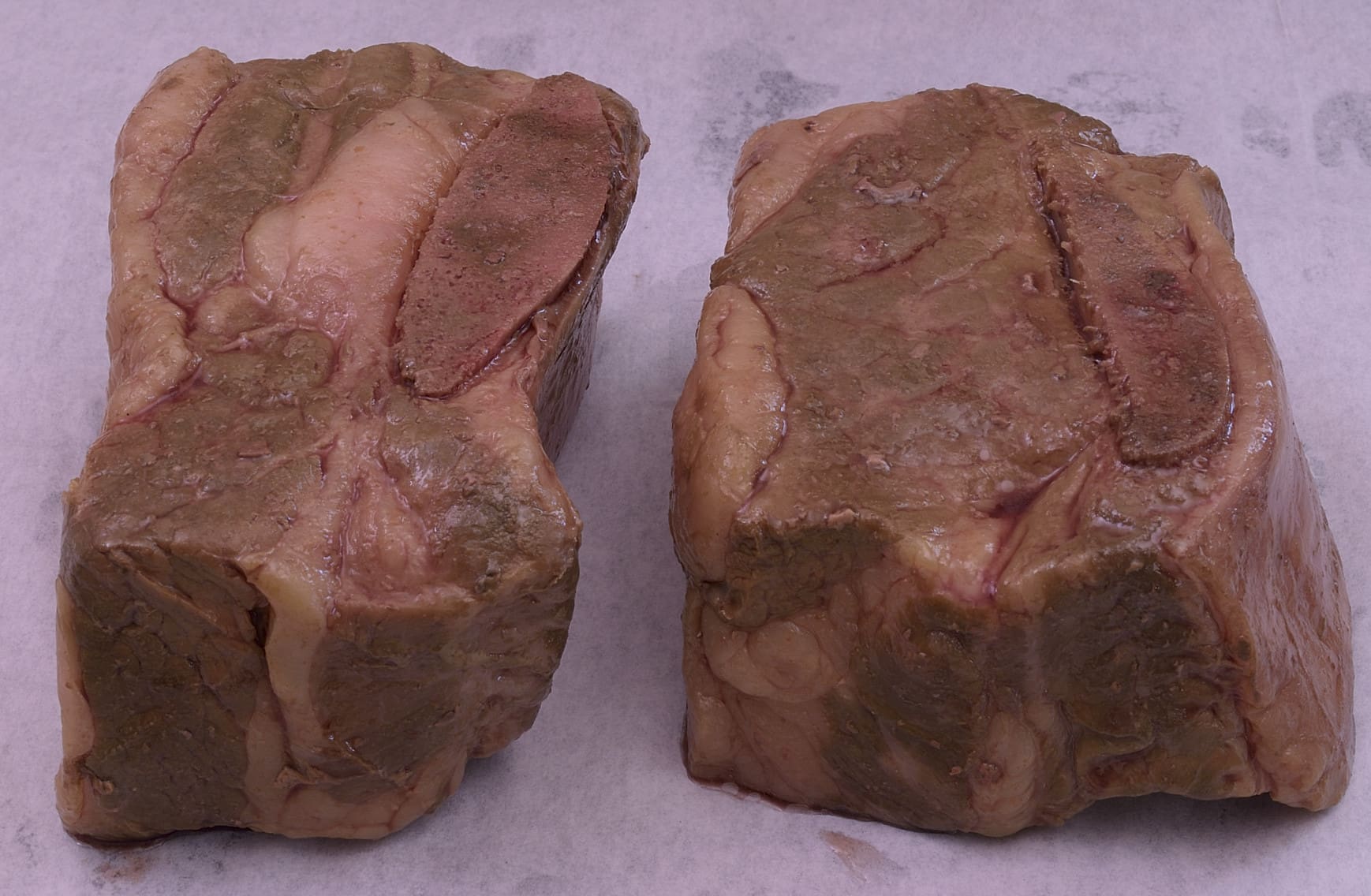
Stage the cuts onto a sheet pan lined with butcher paper or parchment for easy clean up. Pat dry with paper towels.
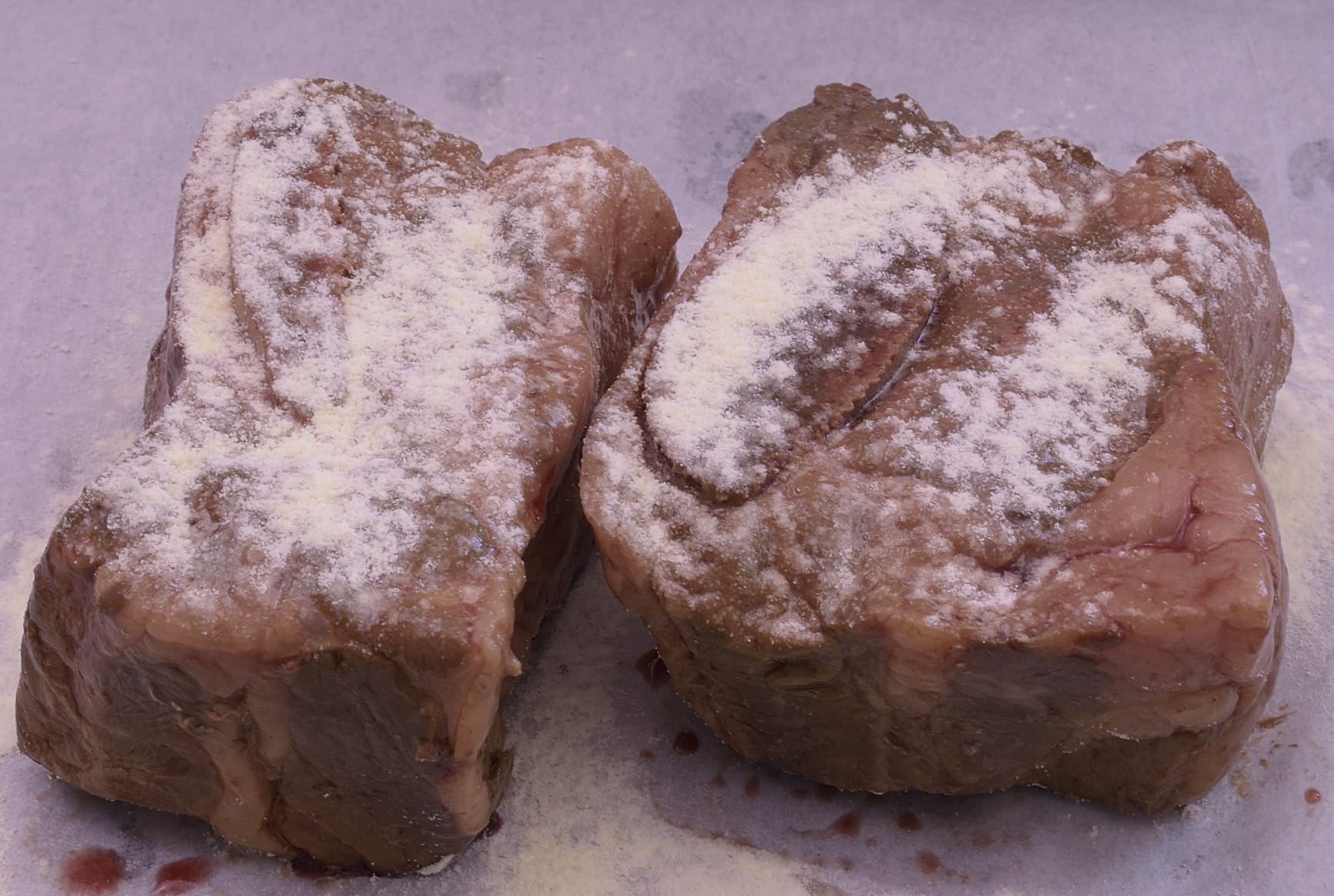
Create a surface
Use a dredge/shaker (or sifter) to dust with powdered egg white (or brush with well beaten liquid egg whites). This will create a sticky surface for seasonings to cling to. For people who are allergic to egg products, powdered buttermilk or even flour can be substituted. Egg whites become firm when exposed to heat, and buttermilk does NOT. Exposing a buttermilk based crust to direct heat from the surface of a pan tends to remove the coating as opposed to securing it.
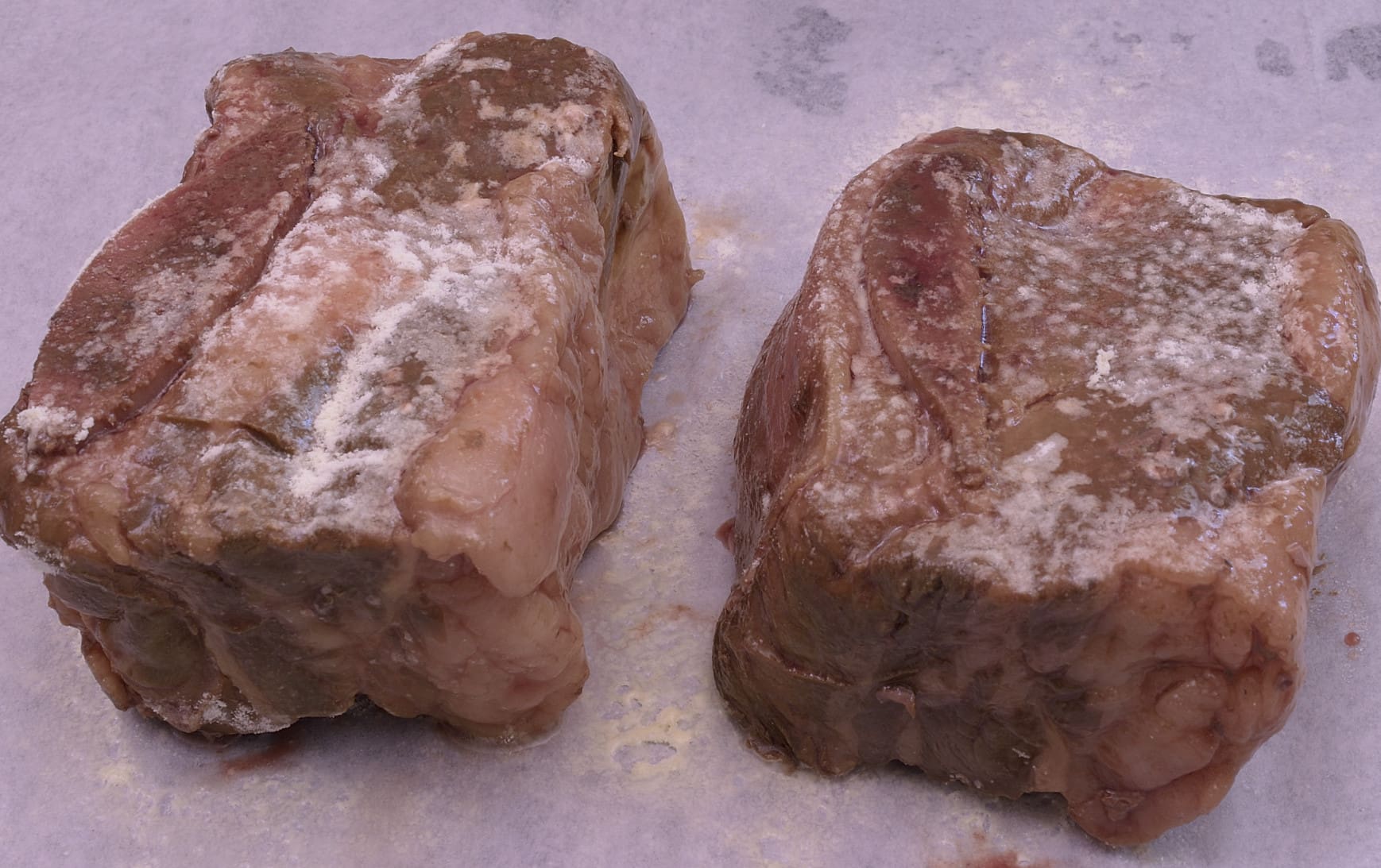
Mist with a spray bottle to dissolve the egg whites (not necessary if you are using fresh egg whites).

Sprinkle with your favorite seasonings–we used an off-the shelf rub mix in this picture. We also have a wide assortment of easy to make rub/seasonings linked HERE. Turn the roast over and repeat the egg white/mist/seasoning process (optional).

Spray or drizzle lightly with oil and set aside to give the coating a few minutes to attach itself.
Utilizing Sous-Jus
The juices in the bag provide extra flavor to sauces and soups. The sous vide process causes the release of proteins (myoglobin and albumins) that cloud the sous-jus. They are harmless, but they have an off-putting aroma reminiscent of sulfur and iron. Once brought to a boil, the proteins will coagulate. The myoglobin takes on a dark appearance and the albumins look rather like scrambled egg whites. Click the link HERE to learn how to remove them!
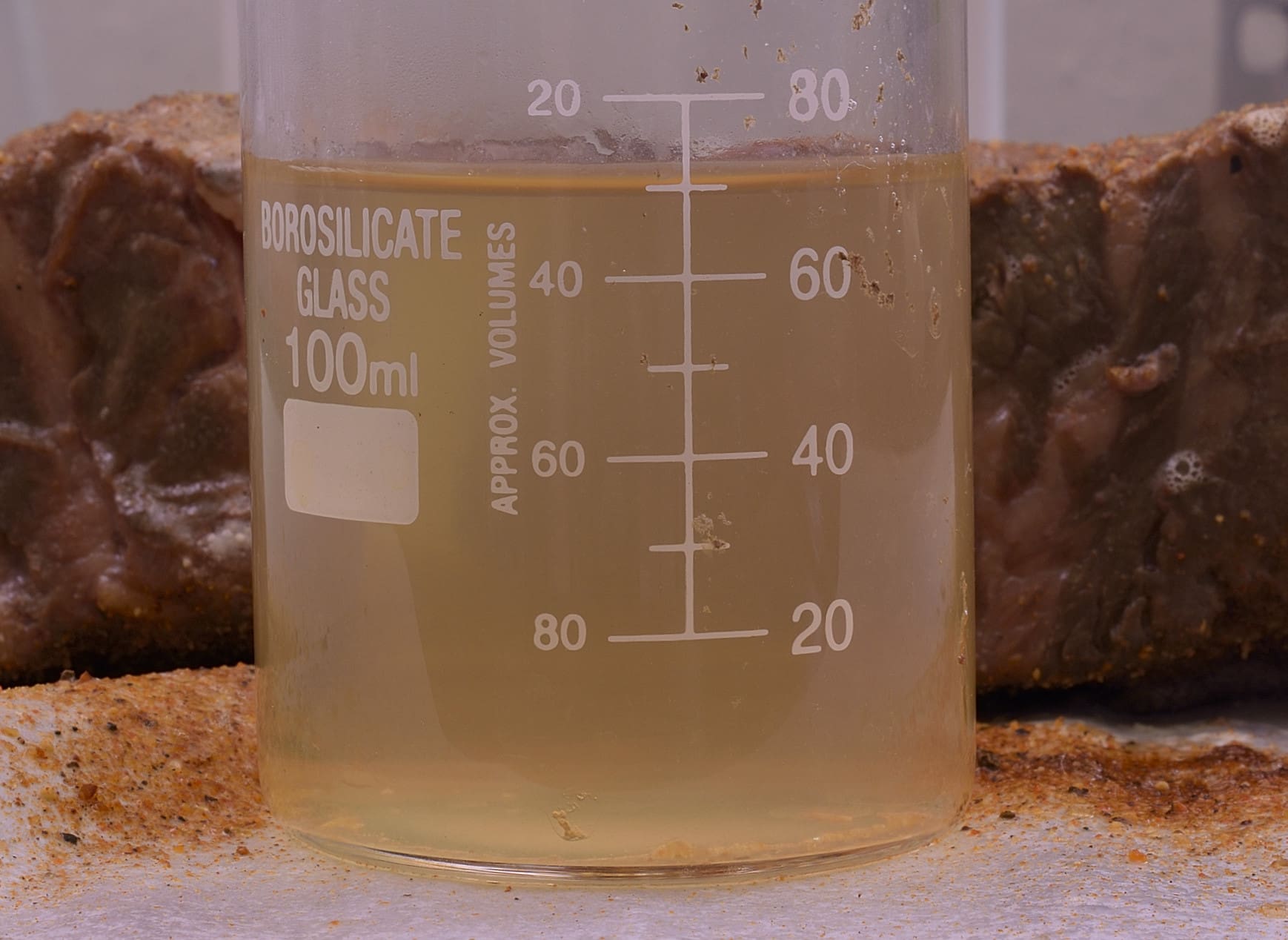
Now we have the equivalent of a rich, heavily reduced consommé to either use or refrigerate for later applications. It can be used to replace water in almost any savory recipe–you will see it called for here and on our sister site, Sous Vide Resources.
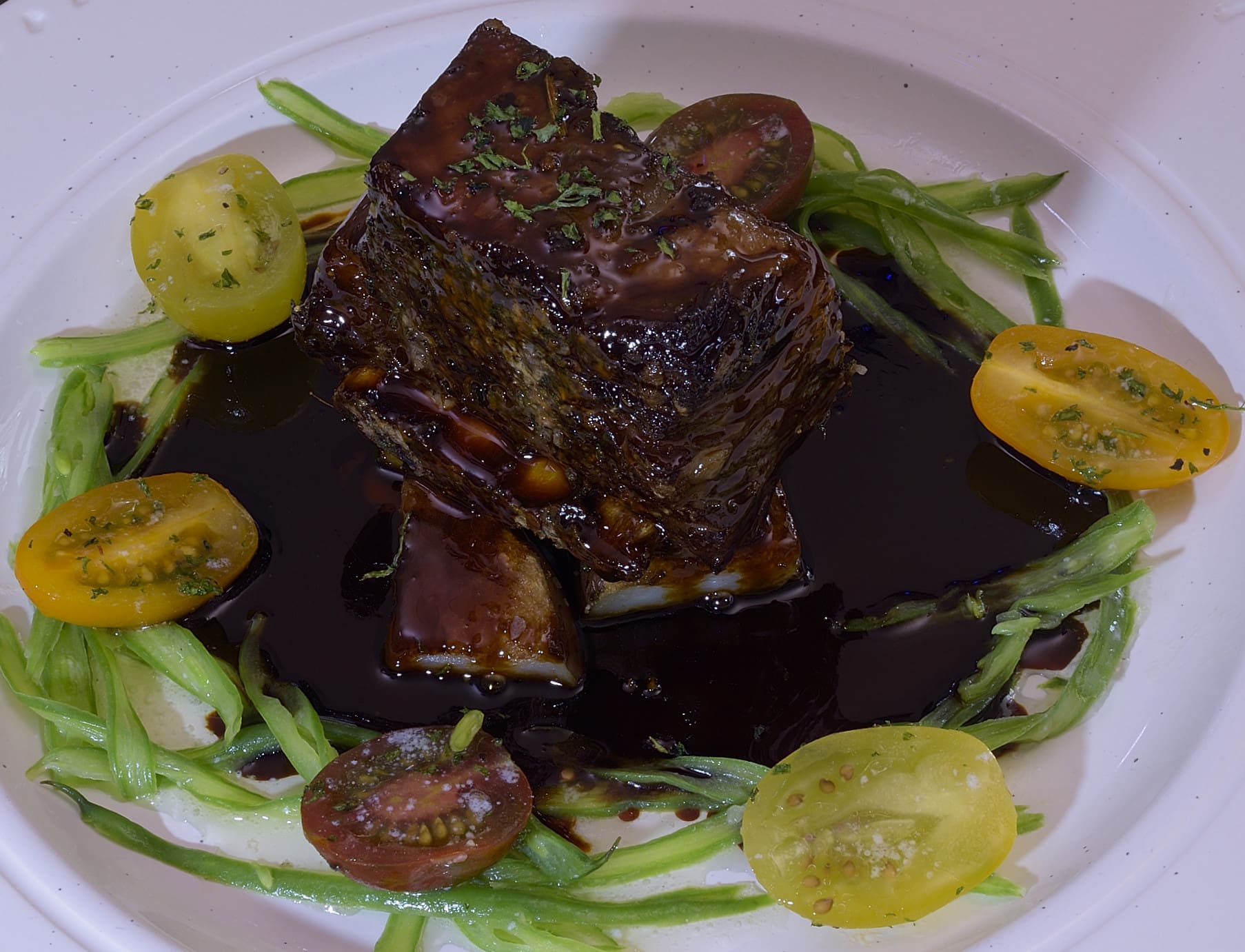
Roasting the Short Ribs:
Roast the short ribs in an oven preheated to
350 F/176 C for one hour.
All Roads Lead to Deliciousness
Regardless of how we intend to serve the short ribs, the sous vide processing parameters and crust creation steps are always the same. Wait. WOOT? The seasonings and sauces used vary according to the preference of the practitioner. The accompaniments vary on the basis of whim and little else. Beyond that, all of the following presentations started in exactly this same way.
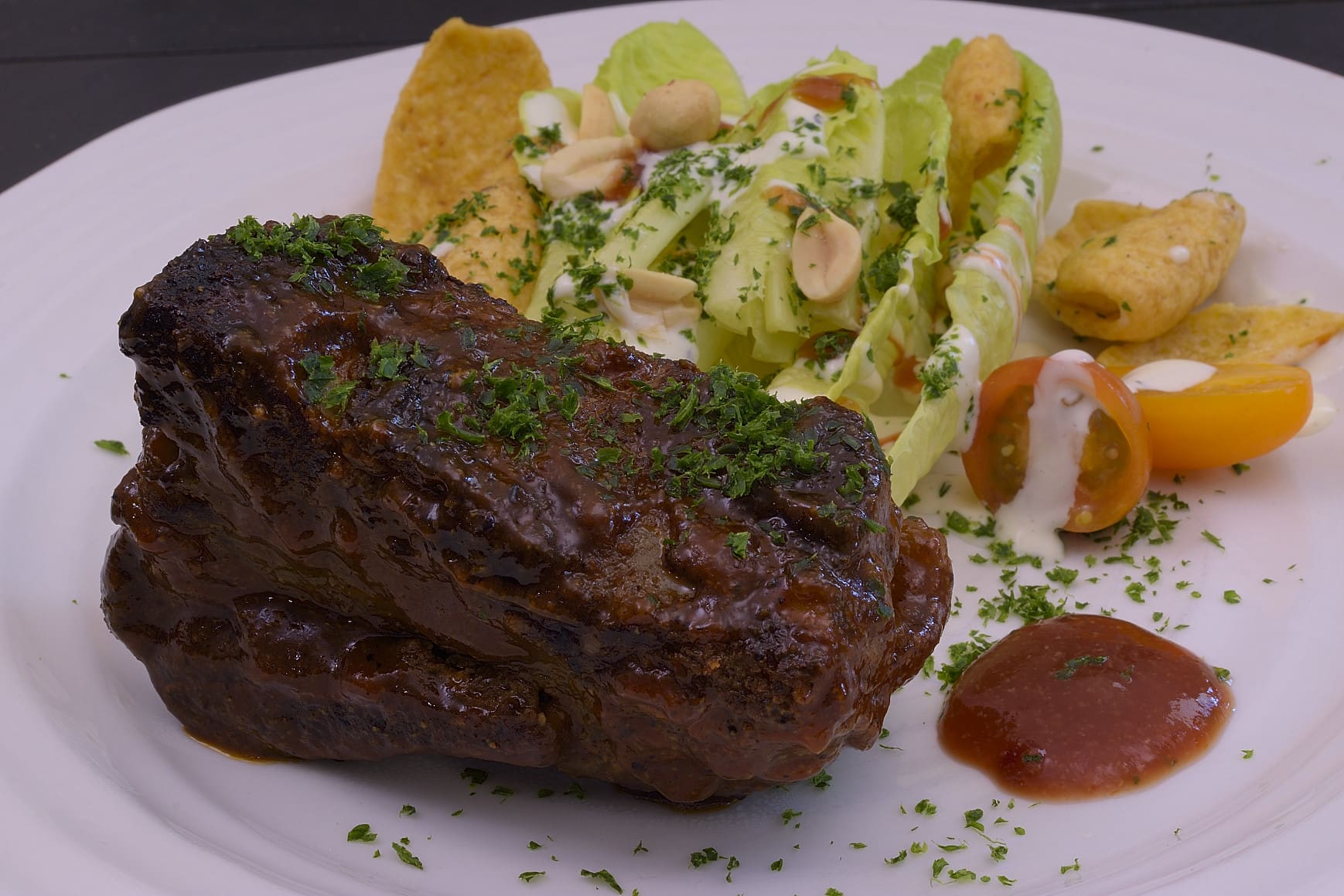
About as American-ish as it gets, glazed with generic barbecue sauce.
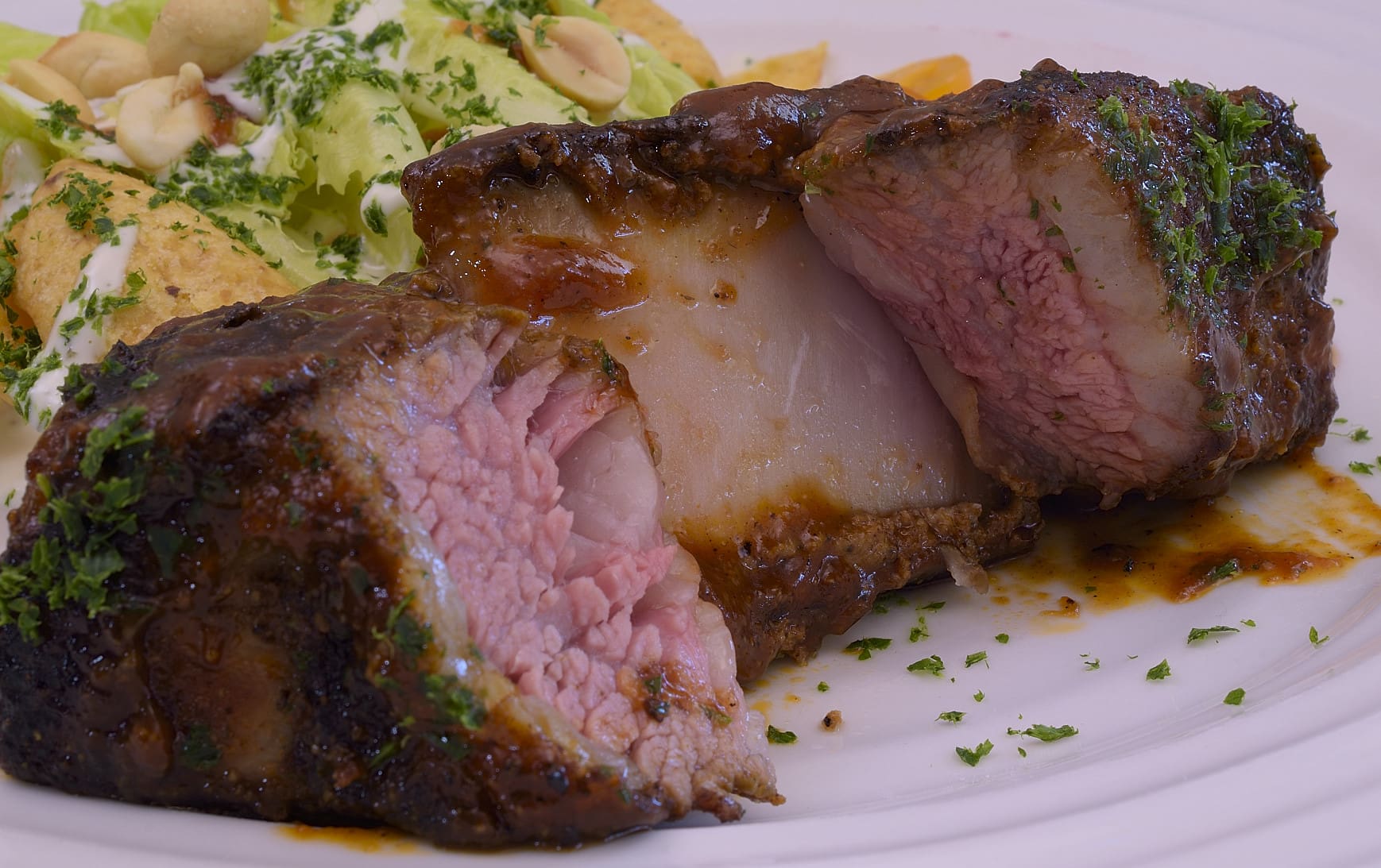
Close to the bone, there is still some pink evident. MONEY!

A slight variation on the BBQ model with pan roasted potatoes and onions and a seared Roma.

A slightly heavier BBQ glaze.
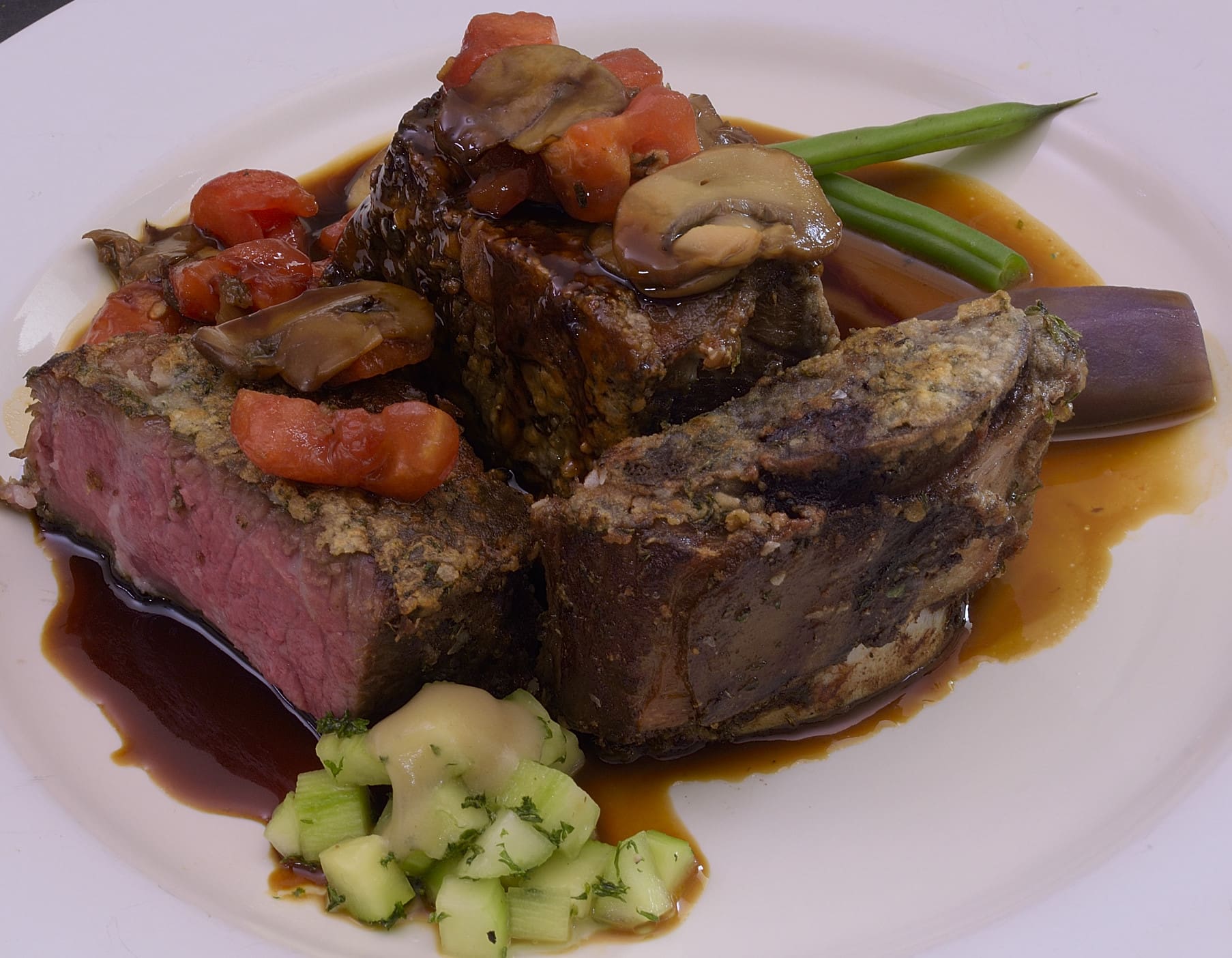
Heavily reduced beef/veal stock, mushrooms, tomatoes, Peruvian purple potatoes, green beans and cucumber salad.
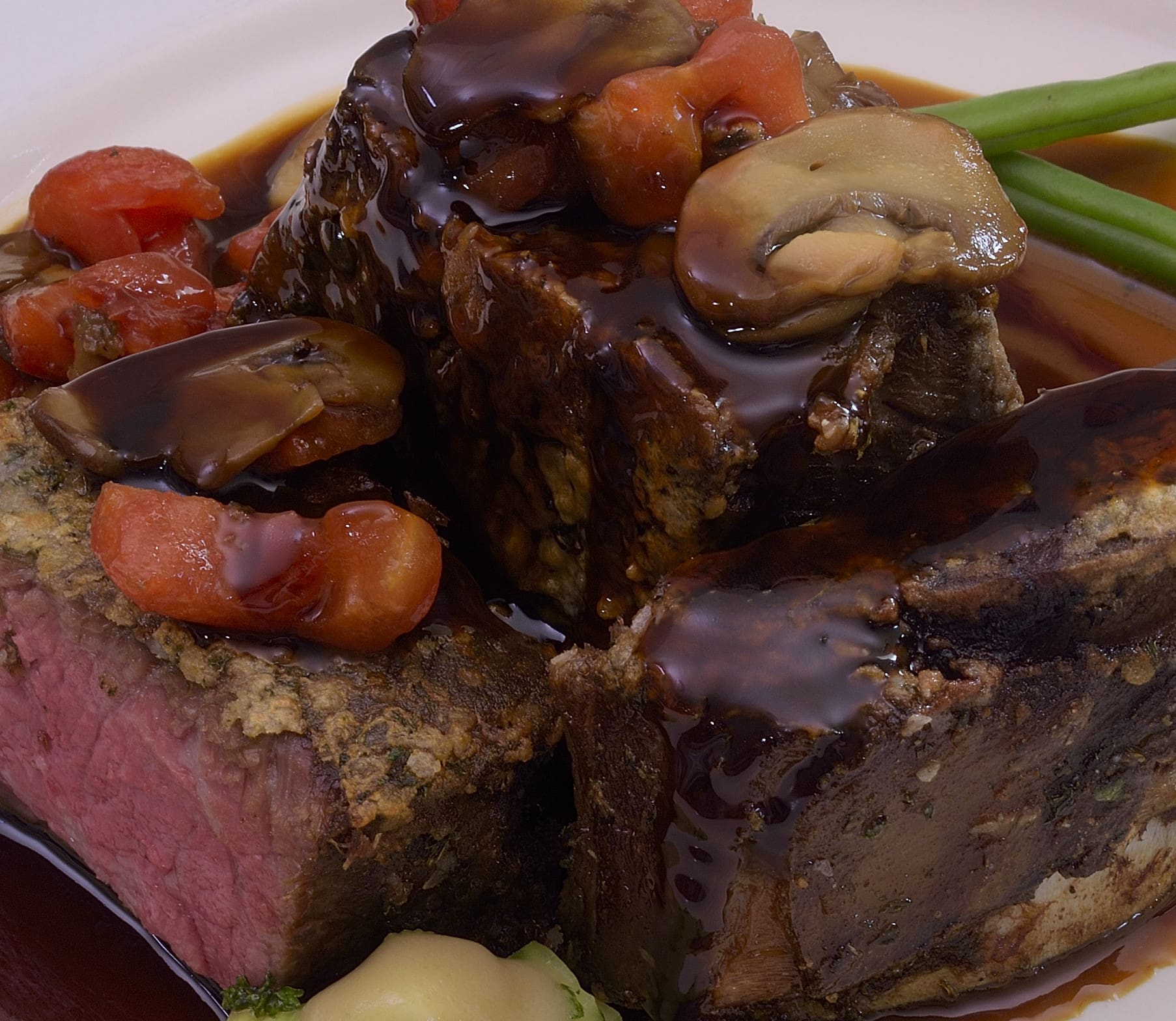
“Continental-ish”
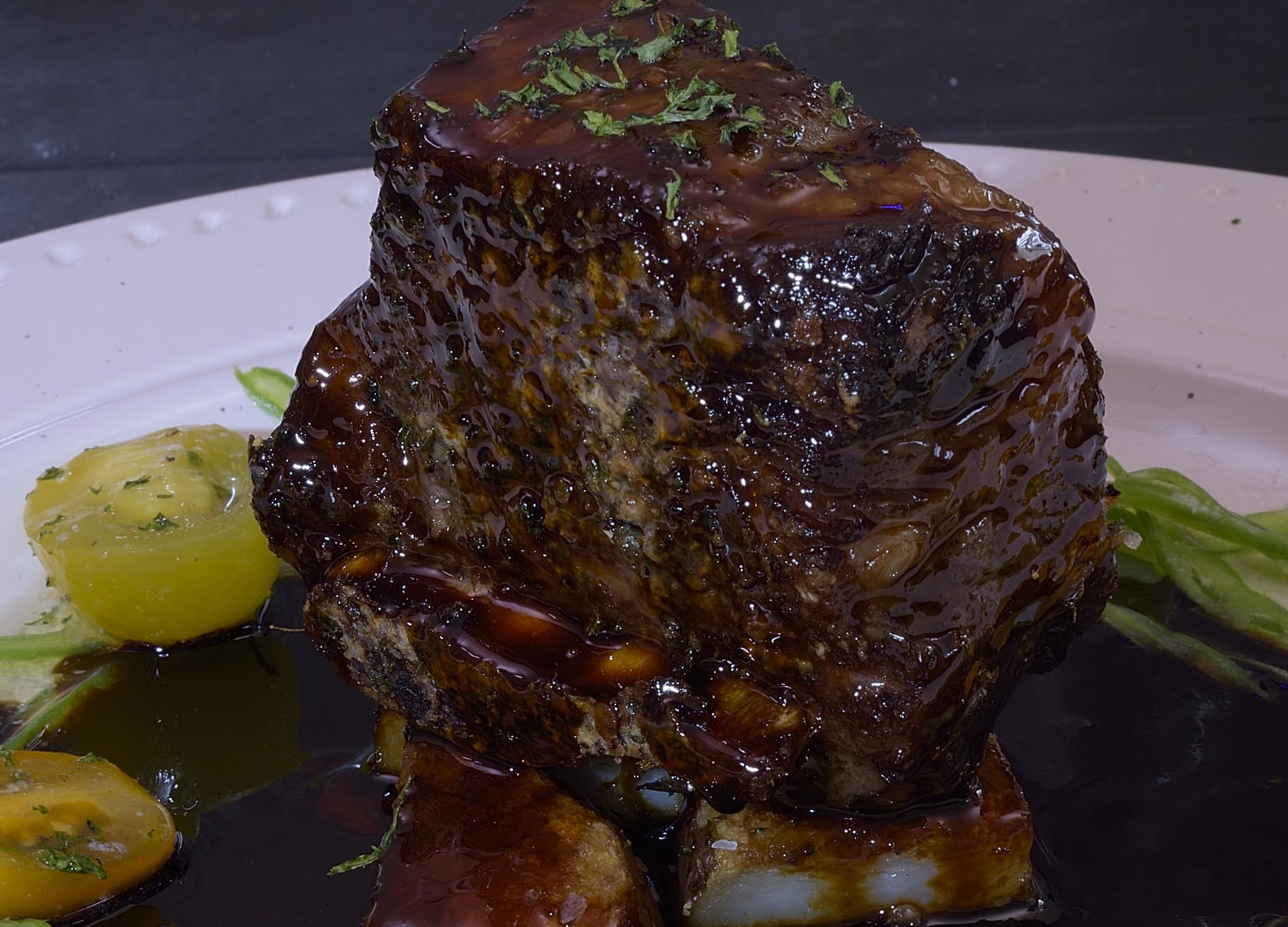
“French-ish.”
Norm

“Norm-ish”
